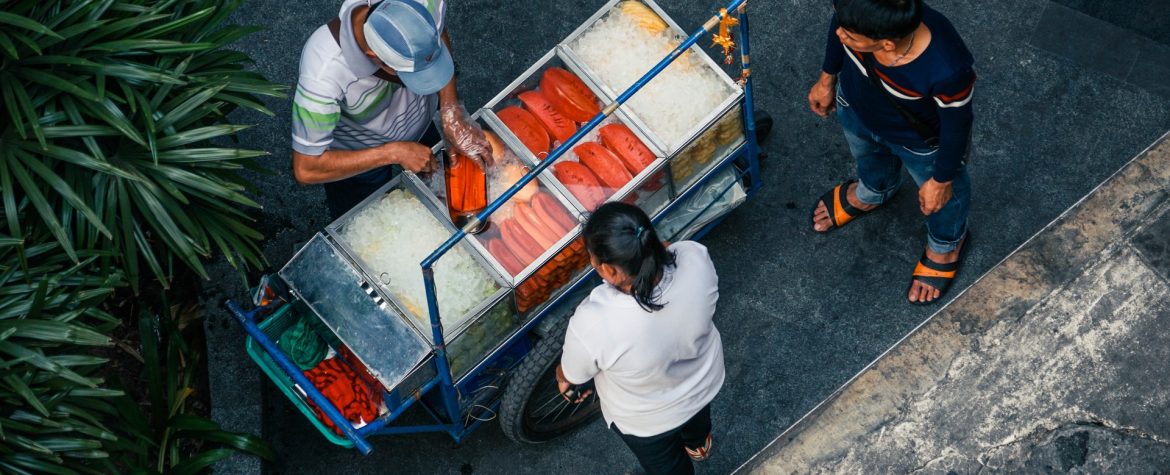SANTOS IMPACT STORY
Mobile money changes the game for Filipinos living abroad
Like any good millennial, John Santos, 32, always has his phone with him. It’s an extension of himself, a fifth appendage that acts as a hybrid personal assistant, translator, navigator, entertainment centre—and now, bank.
John works in Singapore but was born in the Philippines, where he regularly sends money through an app called Dash, supported by Telepin’s innovative platform for Singtel. Dash lets him seamlessly connect his savings account with his mobile cash account, freeing him to manage his transfers to the Philippines his way—on his schedule.
“I tell everyone I know to use Dash. It’s the easiest thing in the world to use, and it saves me time.”
Sending money home wasn’t always so easy. When John’s father moved the family to Singapore in the early 1990s to pursue better opportunities, transferring remittance payments to the Philippines required brick-and-mortar shops and an ordeal of high fees, limited hours, and long service delays. To further complicate the logistics of sending money, the vast majority of people in the Philippines don’t have access to a bank, and instead rely on local money agents to receive payment. Like other migrant families, the Santoses accepted these inconveniences as the cost of doing business between their new home and their old one; it was simply “the way.”
Now, 25 years later, John taps his Android phone and marvels at how far things have come.
“Wherever I am, everything I need to send money is right here in my pocket.”

Using his phone, he pays monthly maintenance fees for a condo and a car he keeps back in the Philippines. The old days of waiting at a counter to send money are becoming a thing of John’s past—and he’s not alone. The number of people without bank accounts in the Philippines still hovers around 70 percent, but Telepin’s mobile technology is quickly rendering that figure irrelevant. More than 10 million Filipinos live and work abroad, sending over $20 billion to the Philippines annually—much of it through seamless mobile solutions, without a bank ever being involved.
For John, this isn’t simply a matter of efficiency. It’s one of pride.
“I’m the sort of guy who always pays his bills early. With Dash, I’m proud of never missing a remittance date or getting charged a late fee. I can send money 24/7.”
Sending money to family members or collectors is just one benefit of Dash. John also uses it when he goes home, usually twice a year. With Dash, he can send money to his mobile cash account, giving him freedom and flexibility while he’s in the Philippines.
“I tell the friends I meet to use Dash when they go back,” he says. “It has the best rates, and it lets you move cash fast from Singapore into your own hands.”
If one of those friends is a skeptic, John has a surefire trick to convince them. He simply shows them the app. One tap to move his money to the Philippines. Another to check his balance. A moment later, a message appears confirming the transfer. Usually, his friends are sold before he even gets that far. “I show them how easy it is,” he says. “It’s very fast. It’s convenient. It’s perfect for everyone.”
Easy, fast, convenient—John praises Dash for these personal advantages, but he’s also quick to point out broader benefits of this technology. “Access to banks isn’t just an issue in the Philippines. For people all over the world, their phone is their financial stability. Mobile money could replace cash if it becomes more universal.”
The universality John imagines is rapidly becoming reality. Today, Telepin services 256 million subscribers around the world, and more than a million merchants. All told, their innovative technology has securely processed more than 10 billion transactions—a number that grows daily.
“I’m excited to see where this goes,” John says as he thumbs through the apps on his phone. “It’s done so much for me already. Imagine what it can do all over the world.”
 Powered By Telepin: Tunisie Telecom Revolutionizes Its Charging System - Read More
Powered By Telepin: Tunisie Telecom Revolutionizes Its Charging System - Read More